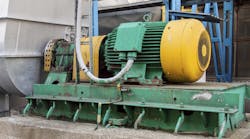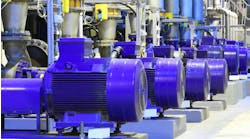An updated edition of the only American National Standard for repair of motors and generators — ANSI/EASA AR100-2015: Recommended Practice for the Repair of Rotating Electrical Apparatus —was recently published for use by the repair industry and its customers. The standard describes industry best practices for the repair, rewinding, and testing of electrical apparatus in order to maintain or enhance the energy efficiency and reliability of both AC and DC motors and generators.
ANSI requires that standards be re-approved at least every five years, prompting the review and approval of the AR100-2015 edition. The revision introduced new requirements, added or tightened performance tolerances in several critical areas, and expanded testing procedures. The standard now includes requirements relating to the machining of commutators and slip rings, and establishes temperature limits for the process of removing motor windings. Additional performance tolerances were added for balancing motors rated above 2,500 rpm. Finally, testing procedures were established or clarified relating to bearing insulation, winding surge comparison and resistance, no-load performance and vibration.
“Since ANSI recognizes only one standard on a topic, EASA’s ANSI/EASA AR100 is the standard for repair of rotating electrical equipment. End users should ensure their service centers are repairing in accordance with ANSI/EASA AR100-2015 to be assured of receiving quality repairs that maintain reliability and efficiency,” said Linda Raynes, EASA president and CEO.
The Recommended Practice may be downloaded at no cost from EASA’s website.



